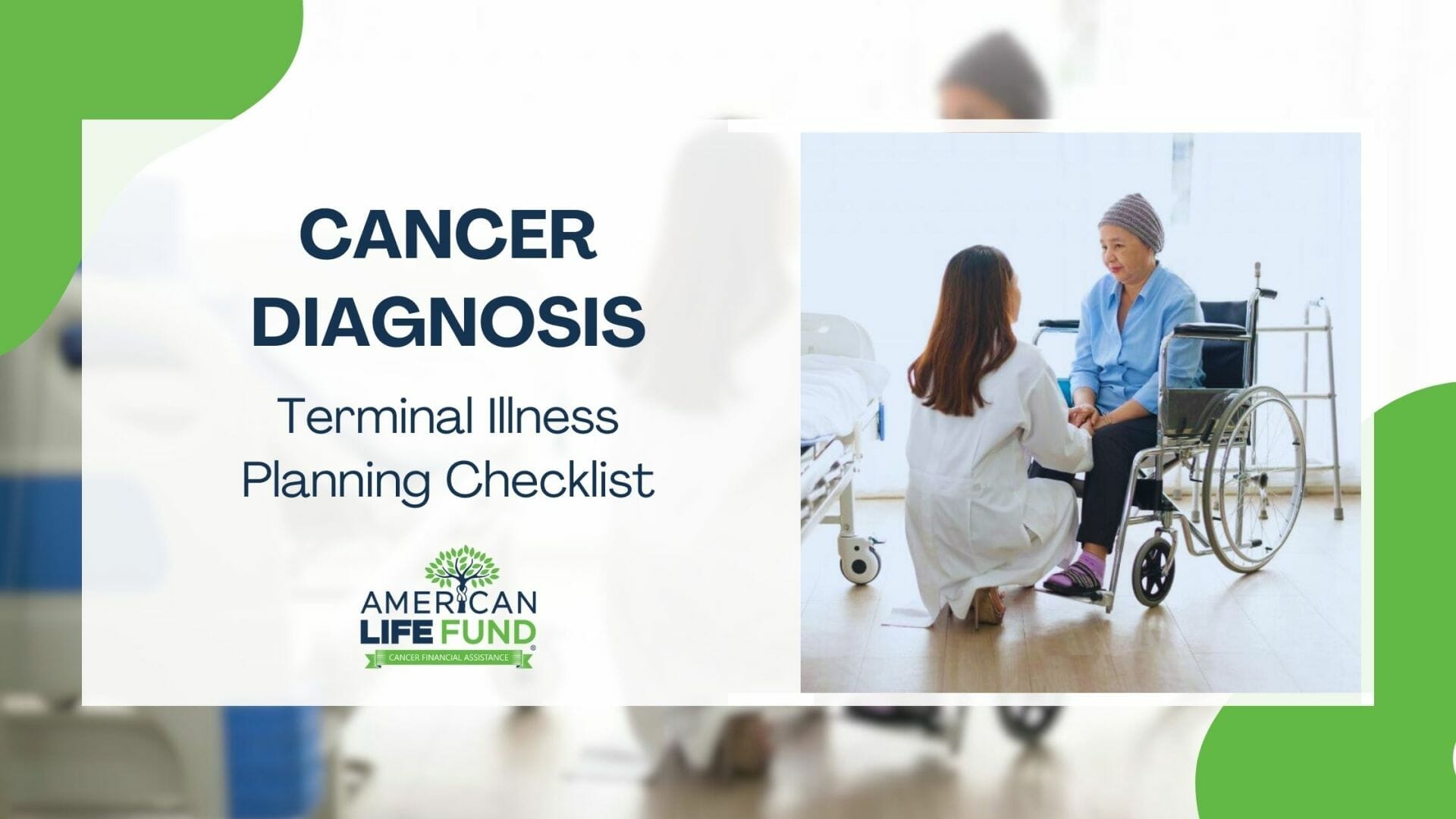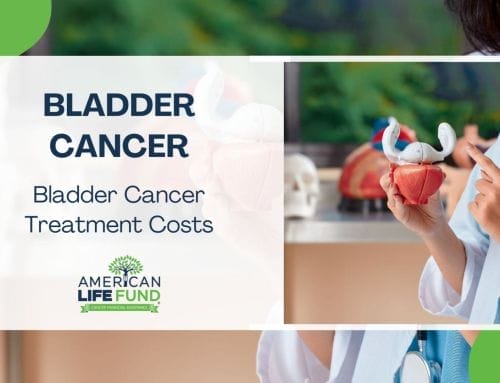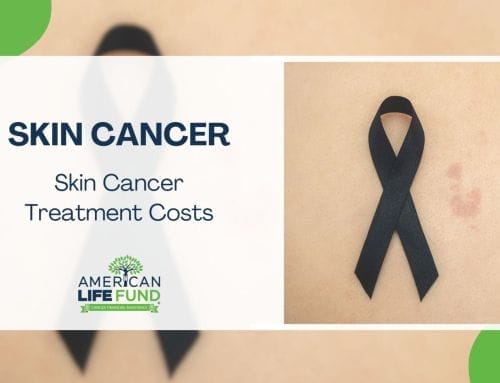If you have recently been diagnosed with a life-threatening illness like advanced-stage cancer, you may be feeling scared, confused, and even hopeless. Coping with a terminal diagnosis can be an extremely challenging situation, but if you or someone you love has been diagnosed with a terminal illness, it’s important to know that you are not alone.
According to the American Cancer Society, approximately 22% of all new cancer diagnoses are at an advanced stage, meaning the cancer has spread and progressed to a point where treatments are mainly focused on comfort and quality of life rather than a cure.
In this article, we’ll cover everything you need to do after receiving an advanced-stage or life-threatening cancer diagnosis, step-by-step.
Note: If you or a loved one has been diagnosed with a life-threatening illness such as cancer, a lump-sum cash payout for your insurance policy via a viatical settlement might be appropriate for you. You can find out more about viatical settlements and see if you qualify for one by visiting us here.
What Does An Advanced-Stage Cancer Diagnosis Mean?
Like many other life-threatening illnesses, cancer is diagnosed in stages. Stages are calculated on a scale from 0-4, and have to do with factors including: the size of the cancer, how far it has spread, and where in the body it is located.
An advanced-stage cancer diagnosis means that the cancer has progressed to Stage 4, which is the final stage on the cancer diagnostic scale. Stage 4 cancer is considered to be advanced because it has spread from its initial site into other areas or organs of the body.
Because Stage 4 cancer is the most advanced form of the illness, the outlook, or prognosis, is generally not positive. However, while Stage 4 cancer is often terminal, it is not always terminal. And even when it is terminal, sometimes patients end up living much longer than expected.
We know it can be hard to stay positive during such a challenging time, and that is completely natural and normal. To ease some of your stress, we have created a life-threatening illness planning checklist.
This convenient checklist will help you to navigate your diagnosis, one step at a time.
The Role of Palliative Care in Managing Advanced-Stage Cancer
Palliative care is a specialized form of medical care designed to provide relief from the symptoms and stress of a serious illness, such as advanced-stage cancer. Its primary goal is to improve quality of life for both the patient and their family. Here’s how palliative care plays a crucial role in managing advanced cancer:
What Palliative Care Is: Unlike treatments aimed at curing the illness, palliative care focuses on comfort and support. It addresses not just physical symptoms but also emotional, social, and spiritual needs. This care can be provided alongside curative treatments or as the main focus when treatments are no longer aimed at cure.
Benefits of Palliative Care:
- Symptom Management: Palliative care helps manage symptoms like pain, nausea, fatigue, and shortness of breath, making patients more comfortable.
- Emotional and Psychological Support: It offers support for dealing with the emotional aspects of cancer, including anxiety, depression, and fear.
- Decision-Making Assistance: Patients and families receive guidance in making complex medical decisions, understanding treatment options, and setting goals for care.
- Coordinated Care: Palliative care teams work with oncologists and other doctors to provide a multidisciplinary approach to patient care, ensuring that treatments align with the patient’s wishes.
How It Differs from Other Forms of Treatment: The main difference between palliative care and other forms of cancer treatment lies in the focus. While traditional cancer treatments (like chemotherapy, radiation, or surgery) aim to kill cancer cells or slow the disease’s progress, palliative care aims to ease symptoms and improve quality of life without necessarily targeting the cancer itself. It’s patient-centered care that looks at the person as a whole, not just their illness.
The Role in Advanced-Stage Cancer: For patients with advanced cancer, palliative care becomes increasingly important as the focus shifts from attempting to cure the disease to ensuring the patient’s comfort and quality of life. It helps patients navigate the challenges of advanced cancer by:
- Providing relief from pain and other distressing symptoms
- Offering support to family members and caregivers, helping them cope with the challenges of the patient’s illness
- Facilitating discussions about prognosis and end-of-life wishes, ensuring that treatments align with the patient’s values and preferences
Palliative care can and should be initiated at any point during cancer treatment, from diagnosis onward. It’s not just for end-of-life care but is a valuable support system for patients and families throughout the journey of dealing with advanced-stage cancer. Integrating palliative care early in the treatment process has been shown to improve both the quality of life and patient satisfaction, and can even positively impact the course of the illness.
Life-Threatening Illness Planning Checklist
Step 1: Centering Yourself – The Absolute First Thing To Do After Receiving A Terminal Cancer Or Other Life-Threatening Illness Diagnosis
It is completely normal to be emotional during this time. That’s why one of the best things you can do is stay grounded.
Grounding (centering yourself) is the process of staying connected to what is going on here and now. When you are grounded, you are less susceptible to getting caught up in negative emotions, simply because you are living each moment intentionally.
When you practice grounding yourself, it will become easier for you to process your emotions in a healthy way, and you are likely experiencing a lot of emotions right now.
Other coping strategies to consider include:
- Journaling: Journaling is a private form of self-expression and a wonderful outlet for your thoughts and feelings.
- Reading: Some people benefit from reading books written by people who have also experienced a cancer diagnosis. Reading into holistic and alternative treatments can offer some positive feelings too.
- Yoga or meditation: Both of these practices focus on centering yourself, and can be immensely helpful in alleviating emotional stress and fostering a calmer overall state.
- A cancer support group:You may benefit from connecting with other people who have received the same diagnosis.
- Talking to Someone Specialized: It helps to talk about your feelings with a counselor who knows a lot about what it’s like to live with cancer. They can give you advice on how to feel a bit better and handle worry or sadness.
- Trying Art or Music: Sometimes, it’s hard to say how you’re feeling. Doing something like art or music can help let those feelings out without having to find the right words. It’s also a fun way to relax.
A community group: If a cancer support group doesn’t feel right for you, there’s always the option of joining a community group, such as a: women’s group, men’s group, religious/spiritual based group, cultural community group, etc.
Step 2: Decide When And How To Talk To Others About Your Diagnosis

For many people who have been diagnosed with a life-threatening illness, like advanced-stage cancer, discussing your diagnosis can be an emotional and challenging experience. It’s important to remember that this is your diagnosis, meaning it’s completely up to you to decide when, how, and even if you want to disclose it, and to whom.
The decision of when to discuss your diagnosis is an individual one. While some people might feel more comfortable discussing these matters only after they themselves have come to terms with their diagnosis and prognosis—others may prefer to have the discussion with their loved ones right away.
When it comes to deciding who to tell, it may be helpful to start out by making a list of friends and relatives whom you’d like to have the discussion with.
Deciding how to tell your loved ones is another question. Some may find it helpful to discuss their diagnosis with the help of their doctor.
For example, if a patient wants their spouse or child to be present at their next appointment, the doctor can take some time to briefly discuss the diagnosis with both the patient and their family member.
Having your doctor present gives you and your family member the chance to have important questions answered in the moment, which can alleviate some of the stress of not knowing the specifics.
For others who either do not want the help of their doctor in discussing their diagnosis, or are hoping to discuss it with many family members at a time, there are other options.
Some options for how to discuss your diagnosis and prognosis (as you see fit) include:
- Writing a letter to individual family members. These letters can be read aloud, sent in the mail, etc. (Many people have an easier time expressing themselves through writing, which makes this a wonderful option for some patients).
- Gathering family members and/or friends together at once to speak to them about what you are going through. For some, it may be easier to simply let all of their loved ones know at once, instead of having several one-on-one conversations and rehashing the diagnosis each time.
Remember, there is no right way to discuss an advanced cancer diagnosis, it’s really all about doing what is best for you and what makes you the most comfortable.
Step 3: Get Organized (Even If It’s Just In Case)
Planning For The Financial Burden Of Your Diagnosis
For many, the financial burdens of an advanced-stage cancer diagnosis can be nearly as frightening and stressful as the diagnosis itself.
As we know, costs for advanced cancer care and treatment can be in the tens and hundreds of thousands, depending on what procedures and medications you may need, whether or not you have health insurance, etc.
Luckily, there are many resources available to those who are currently struggling to afford their cancer treatment costs.
A viatical settlement is a lump-sum cash payout that patients can receive when they sell their life insurance policy. Viatical settlements can be a game-changer when it comes to helping struggling patients afford the care they need. Here at American Life Fund, we offer generous viatical settlements. Learn more and see if you qualify by visiting us here.
Also, take a look at some of our articles on how to find financial assistance and free money for cancer patients:
- Financial Assistance & Free Money For Cancer Patients
- 30+ Organizations & Charities That Help Cancer Patients Financially.
- Financial Assistance for Pancreatic Cancer Patients in 2021
- Financial Assistance for Prostate Cancer Patients in 2021
- Financial Assistance for Colon Cancer Patients in 2021
- How to Get Financial Assistance for Esophageal Cancer Patients
- Financial Assistance for Bile Duct Cancer Patients
Getting Your Affairs in Order
Regardless of your prognosis, everyone can benefit from getting their affairs in order. To make this process easier, we have made a list below of the documents you’ll want to have in order.
Advanced Care Directives
An advanced care directive is a document explaining how you want medical decisions to be made for you, in the event that you are unable to make them yourself.
- DNR: This directive stands for “do not resuscitate,” and means that you are electing not to receive CPR treatment in the event you stop breathing or your heart stops.
- DNI: This directive stands for “do not intubate,” meaning you are denying the option for a breathing tube, should that become necessary.
- DNH: This directive stands for “do not hospitalize.” These are commonly used by nursing home patients and instruct caregivers not to send the patients to a hospital under certain circumstances.
- POLST: This directive stands for “Physician Orders for Life-Sustaining Treatment.” Unlike the other directives, which are all legal documents, a POLST is a medical order, which, “orders providers to give specific treatments during an emergency”.
Healthcare Proxy
Also known as a “durable power of attorney”; this is a document that allows you to appoint another person to make any necessary health/medical decisions on your behalf, in the event that you are unable to do so.
Financial Power Of Attorney
This document is basically the financial version of the “healthcare proxy” document. In other words, a financial power of attorney allows another person to make any necessary financial decisions on your behalf, in the event that you are unable to do so.
Living Trust
Like a Will, a living trust protects a person’s assets and ensures they are transferred to the designated beneficiaries upon the passing of the holder of the living trust. You are known as the “trustee” of your own trust, until your passing, when a trustee of your choice will take over.
Unlike a Will, which only becomes effective after the creator’s passing, a living trust is active immediately after it’s created, while the creator is still living. Also, unlike with Wills, living trusts are not required to go through a probate process (which is a legal examination process).
Last Will And Testament
Your Last Will and Testament is a legal document that functions to protect your estate and assets, and which designates who will inherit them after your passing. It functions in essentially the same way as the living trust, but with those few key differences mentioned previously.
Step 4: Living Your After A Life-Threatening Diagnosis
A life-threatening diagnosis does not mean your life is over. Maybe it’s just beginning.
Remember your bucket list full of items you always told yourself you wanted to do, but never did? Well, maybe now is the time to get back to it! Perhaps you’ve always wanted to go on a cruise, or swim with dolphins, or heck, even just try a new hobby. There’s really no reason you can’t start now. Have fun!
When you receive a life-threatening diagnosis, it can feel like your world is crumbling. Every day feels like a battle, and it can be hard to imagine living your life after the diagnosis. However, it is possible to find hope and joy even in the darkest of times.
So with that, we encourage you to spend time with your loved ones, check items off of your bucket list, take that dream vacation you always wanted to go on, celebrate your life and the lives of those around you, and deepen the relationships with those closest to you.







